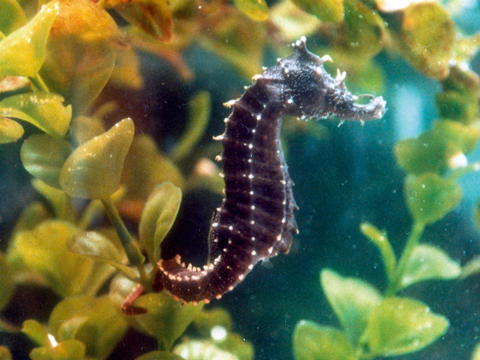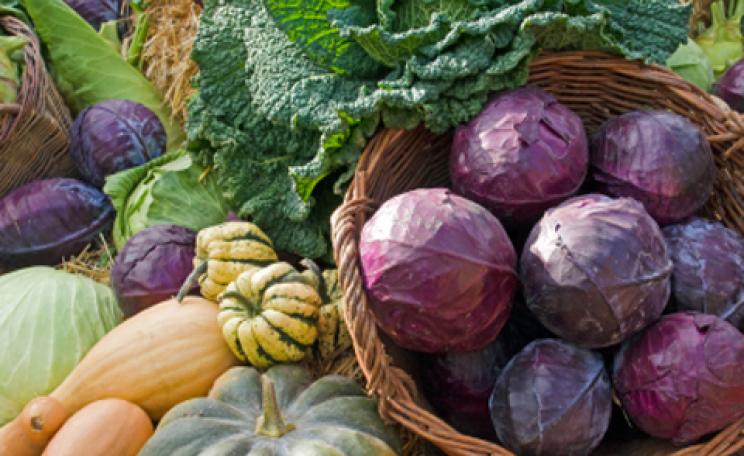This week sees the launch of the 2011 Red List - the IUCN's compendium of severely threatened species. Taking in everything from mammals, to amphibians, reptiles, birds and flowers, the IUCN works closely with scientific experts and conservationist organisations around the world to constantly update the Red List, tracking species and categorising them into levels of endangerment and providing conservationists with a tool with which to measure their progress and success. Jean-Christophe Vié, Deputy Director of the Global Species Programme for the IUCN, has been with the organisation for 20 years, and has been involved in conservation efforts all over the world, including in French Guiana, Gabon and Guinea-Bissau, including founding the NGO Kwata in French Guiana. Vié spoke to the Ecologist about conservation, Red List, and the IUCN.
Henry Gass: What sorts of species are currently most under threat?
Jean-Christophe Vié: ‘It’s hard for me to single out one because 19,000 are threatened. 1,134 out of 5,494 mammals are critically endangered, and for birds it’s 1,240 out of 10,027. On top of that you have data deficient species to whom we can't really assign a category because we have no information, so they could be threatened.’
HG: What’s threatening them?
JCV: ‘Habitat disruption is the most important threat and it’s basically what humans are doing to the planet: deforestation, building infrastructure; you know, building dams for freshwater species, so that’s the main threat. Another big one is over-harvesting. That’s the case for manned species; too much fishing, hunting, poaching for mammals such as primates. Invasive species are really a big threat to many places on earth because they take over entire ecosystems, pollution, disease is increasing - these are the main problems we face.‘
 HG: What can be done to improve conservation?
HG: What can be done to improve conservation?
JCV: ‘There are many, many different things, and if you look at species level – which is completely different from one species to the next – most of the time, you realise that you have to go beyond that; you need to operate and work at policy level. You just need to implement something in parliament or they just need to put into practice what they have agreed. In Japan, so they have agreed 20 objectives; they just have to implement that. Improvements can range from creating parks and reserves, and managing them properly to proper communication to explain why this is a problem for us in the future. Work at an individual species level, stopping destructive practices - but science also needs to change the way decision-making is made. Science is ignored more and more, that’s something that we are seeing. People are making decisions based on immediate profit, maximum profit, not based on the best technical advice. So that’s a trend needs to change. Beyond nature, conservation, it should be an aspiration [to improve] education, [fight] poverty, and [save the] environment in one go: preserving the environment is one means of achieving all these other objectives. We need to stop seeing the environment as something you do basically if you have some money left, and to make the environment really linked to human rights, to sustainable development, to education, poverty elimination, because it’s really key. That’s real; it’s not us making the environment a problem because we just love butterflies and things living in the wild, that’s not the case. It’s really key for the future of humanity.’ HG: What is the Red List doing for conservation?
HG: What is the Red List doing for conservation?
JCV: ‘What we do is document the status of species. At the moment we are [looking at] 60,000 species, and we want to expand that more so that we have a good representation of all current biodiversity. At the moment we are biased towards vertebrates so that’s something we want to correct. We produce an indicator and show what the trend is all the time, so it’s unbiased information, and the ratings are the same. The Red List is used by the UN and the European Commission for example, so even though it’s only an indicator, it’s a powerful one that is being used. We advise, for example, mining companies, so that they know where the activity is going to affect species, for example. We have to guide these kinds of activities or guide the establishment of protected areas so when you have a limited pot of money and you want to basically invest in species conservation, biological conservation or the environment, you can use the Red List as a tool to guide your decision.‘
HG: Why is making a Red List better than other methods of conservation?
JCV: The Red List documents what has happened and it provides essential information to people around the world – I mean, most NGOs are using it just to support their work. They use it as a reference, we know what is happening, it’s objective information, and they use it. People tend to rely on governments to do something, but it’s not just governments; absolutely everyone needs to work on conserving the planet’s fauna and flora. We cannot rely on governments; we can see that they are struggling to save their own economies so how could they save the planet? But they can put a framework in place, they can take out progress incentives - we know there are plenty of subsidies that are actually contributing to the destruction of nature. In agriculture, fisheries and many things like that, these are incentives to destroy nature, and this is really bad, something we need governments to understand and phase out, or reform.’
HG: How else is the IUCN involved in conservation?
JCV: ‘The IUCN is really broad, because we work on the forest, we work on the ocean, we work on water – the pollution of water in the rivers, how you share the existing water between different users – we work a lot at the policy level, we work on social policies, we work on the economy, on biodiversity, and in response to the Red List, we created a fund to actually do conservation. We are going to allocate $4 million just to respond and do something about a number of species. Last year there was a big movement to protect tigers, now it’s rhinos, but it’s not only these charismatic species: it’s all kinds of species including invertebrates and plants. We also support legislation, governmental legislation.’
HG: What effect has the Red List had?
JCV: We’ve had some successes, which we have been able to document. Last year, we published a paper in Science showing that actually we had an impact in the conservation community who were using the Red List information to show that conservation worked because you have plenty of deniers all around the world just saying that the issue’s dead, it’s not important. They’re denying the fact that there is a problem. So unfortunately we keep stating the obvious, because some people are more influential and can manipulate opinion. We keep doing that, putting the facts on the table. What we have also been able to do is track the situation in different groups, and for all the species in the group over a different period of time – nearly all of them show a decline. For mammals in general there is a decline. Amphibians are very threatened and declining, corals are becoming very threatened and declining very quickly, birds are declining. So there is not a single species group for which you can say, “Oh, it’s doing better.”’
HG: How are ecosystems and biodiversity important to society?
JCV: ‘Just look around and you’ll find plenty of things that you use that come directly from nature and from biodiversity or ecosystems. I’m sure you have paper, I’m sure you have maybe some food, I’m sure you have maybe things made of wood, you’re breathing oxygen and drinking water - it all comes from from nature. These are simple things and people tend to forget that all the things we depend on comes from nature, so if we destroy that, are we going to eat petrol and metal, and drink polluted water? No, we absolutely need nature.’
 HG: What about domestic species such as those in the UK?
HG: What about domestic species such as those in the UK?
JCV: ‘The UK is no different from other parts of the world. That’s actually one country where you have a very active environmental movement, with some of the largest NGOs you can find. The RSPB, which looks at birds has made the case that even watching birds is big and it creates jobs. You have water problems, pollution issues in the UK but the important thing is to not let people think that biodiversity conservation is about protecting only elephants and rhinos. What is also important is the common biodiversity, even ones you don’t see in the soil. If you have nothing in the soil, it will be bad because you won’t be able to produce food. If you have no pollinators you will not have food production. Control of pests is important: if you have no birds – insect-eating birds – you will be swamped with insects. Insect populations have to be regulated but using pesticides will create more problems, which is why bird life is so important.’
Photos: Ana Cristina Monteiro-Leonel, Kevin Schafer (kevinschafer.com), A C J Vincent/Project Seahorse
Species on the Edge of Survival, a pictorial guide to 365 of the plant, animal and bird species currently under threat is published this week. For more information, go to www.harpercollins.co.uk
| READ MORE... | |
 |
GREEN LIVING Among necessary giants: why we can’t afford to lose the elephant Cyril Christo and Marie Wilkinson, authors of Walking Thunder, explain why the survival of the elephant is critical for our own future |
 |
GREEN LIVING The Really Wild Show: Namibia's pioneering conservancies From the endless red dunes of the south to the teeming game reserves of Damaraland, Namibia is home to some of the world’s most important eco-systems. Ruth Styles went to find out how local people are helping to preserve them |
 |
GREEN LIVING Best Expedition in the World: meeting the ‘marine guardians’ In the second installment of his ‘Best Expedition in the World’ diary, Ben Southall meets some of the marine guardians working to protect the Great Barrier Reef |
 |
GREEN LIVING Q&A: Ross Bowers, Challenge4aCause Launched in 2009 to raise funds to protect Namibia’s endangered black rhino population, Challenge4aCause’s Ross Bowers sat down with Henry Gass to talk conservation, tourism and why poaching is still a threat |
 |
GREEN LIVING Q&A: Ben Southall He’s been a charity fundraiser and is now a fully-fledged adventurer. But is ‘Best Job in the World’s’ Ben Southall about to add eco-warrior to his CV? Ruth Styles met him to find out |








